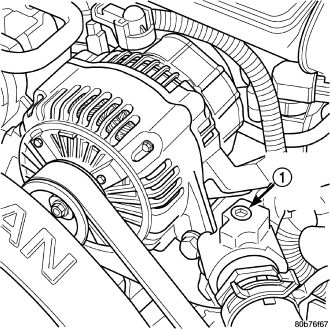An antifreeze is an additive which lowers the freezing point of a water-based liquid and increases its boiling point. An antifreeze mixture is used to achieve freezing-point depression for cold environments and also achieves boiling-point elevation (anti-boil) to allow higher coolant temperature. Buying an antifreeze that requires you to mix it with water can be a little more involved.
However, it gives you more flexibility when it comes to mixture. This represents a compromise between cooling efficiency and the ability to prevent the mix from freezing during cold weather. After all, the initial purpose of antifreeze is to prevent freezing. The closer you are to half water and half antifreeze, the more effective it is.
I would also recommend getting an antifreeze tester from a store to see how good your mix is.

It is best not to mix different types of coolant or antifreeze with one another, unless it is unavoidable. FREEZING POINTS FOR SOLUTIONS OF ETHYLENE GLYCOL: GLYCOL. Just recently in the Clevelan OH area we had artic like weather and as a result my antifreeze turned to slush. If you have a coolant loss, top up with the correct strength of antifreeze mixture.
Adding plain water weakens the mixture. Coolant mixture finds its way through leaks or weak hoses more quickly than water, so make sure that all connections are tight. Ethylene glycol antifreeze is the most common antifreeze used in automotive applications worldwide.
Consisting of a mixture of ethylene glycol and water, the ethylene glycol antifreeze not only resists freezing, it also resists overheating when used in warm climates. Freeze protection actually worsens with too much antifreeze and not enough water. The density of the mixture is 1. The most important is keeping the water in your radiator and engine from freezing in cold temps.
No-Freeze antifreeze mixture contains allcohal. View the answer on StudySoup. A substance, often a liquid such as ethylene glycol or alcohol, mixed with another liquid to lower its freezing point. Antifreeze serves a few purposes. The solution formed is called an antifreeze mixture.
The test strips are the only way a mixture of. Find all the Tester Kits You Need at Zoro. The easiest way to check antifreeze is a hydrometer that measures the specific gravity of your coolant mixture.
These devices pull a small amount of antifreeze out and then you read the indicator on a float to determine the freeze protection of the solution. Although water is able to hold some of an engine’s heat, most engines require a mixture of water and chemicals, more commonly known as antifreeze. This product is a crucial component of the cooling system, as it helps the car operate in a variety of temperatures, from the frigid cold to the scorching heat. Since a radiator cap is meant to keep pressure within your radiator the whole cooling system is considered a sealed or pressurized system.
Such liquids can be used for flow temperatures down to -25°C, depending on the application the thermostat is used for. Pure antifreeze , which is the chemical ethylene glycol, has a boiling point of about 388. However, most coolants are made of a combination of ethylene glycol and water. A common mixture in a car radiator is percent ethylene glycol and percent water. This mixture has a boiling point of 2degrees Fahrenheit.
In my years of radiator shop work, excessive antifreeze in the coolant mix was a common problem. Anything over and you reduce the ability of the coolant to transfer heat. While a 50:mix is the most common antifreeze ratio, you may discover that even with a clean and full system your car’s coolant is showing a freezing point that’s higher than predicted temperatures in your area. Tutorial help mostly for Basic Math and up through intermediate algebra.
Or should there be less water? Only in an emergency should you add only water to the coolant system. Most modern engines have aluminum cylinder heads, which require the protective anticorrosive properties of antifreeze. Some coolant recovery systems are pressurized and have a radiator pressure cap instead of a normal cap. The litre bottle has an easy pour spout, and the coolant itself will work in any car, van or light truck, guaranteed.
A fluid with a high concentration of ethylene glycol or methanol, which is added to car, truck and other cooling systems for internal combustion engines to substantially reduce the freezing point of the coolant. Expreess the concentration of ethylene glycol as volume percent. The key is the mixture of coolant and water.
When done in the proper proportions, the freezing point gets much lower: From that you can see that the ideal mixture for extreme cold weather is about anti-freeze and distilled water. Now, unless you live in a very cold climate, you might be concerned with what happens when the coolant is hot. Automotive Coolant Coolant is a water and antifreeze mixture that is added to your engine periodically.
Your order may be eligible for Ship to Home, and shipping is free on all online orders of $35. Pure ethylene glycol freezes at about −°C (1 °F) but, when mixed with water, the mixture freezes at a lower temperature. For example, a mixture of ethylene glycol and water freezes at −°C (−°F).

Diethylene glycol behaves similarly. Homogeneous mixtures are hard to separate and antifreeze is hard to separate. This site is using cookies under cookie policy. In addition, it is well mixe which is another property of homogeneous mixtures. Suppose you have a bottle of pure antifreeze and a bottle of antifreeze mixture.
How much of each must you need to make enough of a 77. In case you missed it, here’s a quick recap. Automotive antifreeze is a whole different critter.
RV antifreeze is non-toxic and meant for pumping into the plumbing system.
No comments:
Post a Comment
Note: Only a member of this blog may post a comment.